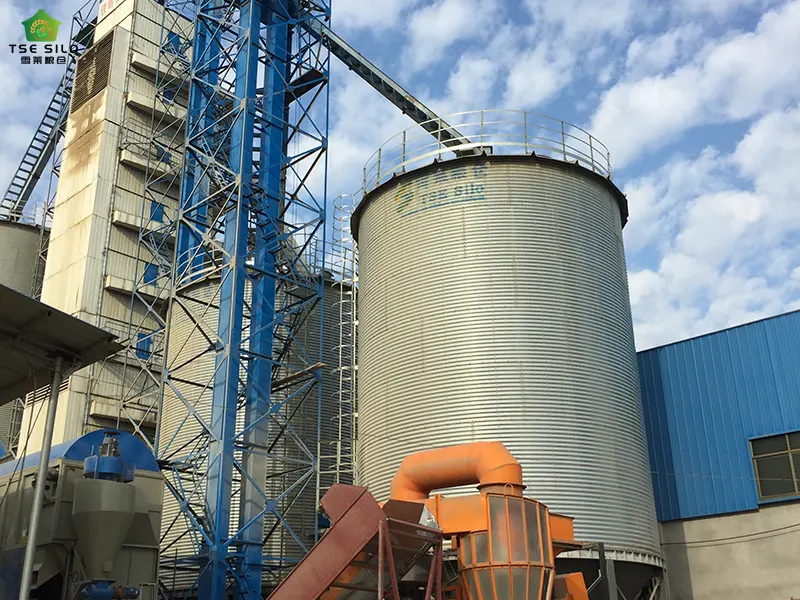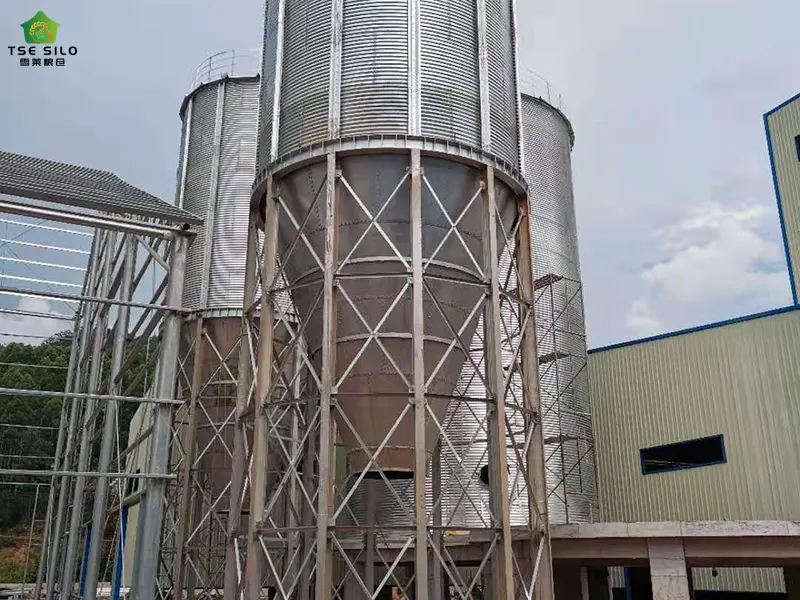


In the early stages of constructing grain steel silos, a series of preparatory work is necessary. Selecting the appropriate silo model, configuration, and storage capacity is one of the most crucial issues. This is because installing unsuitable silos can easily lead to wasted costs or failure to meet specific needs. Therefore, in the initial construction phase, we must comprehensively consider various factors to select a suitable grain steel silo. Today, Shelley Storage will explain the precise control of core issues in the grain steel silo selection process.


Starting with needs means considering the types of materials to be stored, the storage capacity, and the turnover frequency of materials within the silo. After determining the storage requirements, we also need to consider our actual budget to choose a cost-effective solution. The following core questions must be clearly answered, as they form the basis of all decisions:
Based on structure and construction technology, steel silos are mainly divided into the following categories:
| Type | Characteristics | Advantages | Disadvantages | Applicable Scenarios |
| Spiral Interlocking Steel Silo (Lipp Silo) | On-site rolled steel plates, interlocked and formed, with spiral ribs on the silo wall. | 1. Fast construction speed, mechanized operation. 2. Excellent airtightness, suitable for storing materials with high requirements. 3. Good integrity and excellent seismic performance. 4. High degree of automation,low labor costs. |
1. Silo capacity is usually small (generally less than 10,000 tons per silo). 2. Fixed shape (cylindrical), not easy to modify. 3. High requirements for on-site power and other supporting facilities. |
Suitable for materials with high requirements for moisture and oxidation prevention, such as grains (wheat, corn, rice), food raw materials, lightweight building materials (cement, fly ash), and environmental protection materials (sludge, biomass pellets). |
| Prefabricated steel silos (bolted silos) | Standard plates are produced in the factory and connected on-site with high-strength bolts. | 1. Standardized production, stable quality. 2. Flexible expansion, disassembly, and relocation. 3. Large single silo capacity (up to 10,000 tons or more). 4. Unaffected by seasons, flexible installation. |
1. Slightly less airtight than spiral silos (but this can be compensated for by applying sealant). 2. Large workload for on-site bolting. 3. High requirements for the punching precision of the plates. |
Suitable for large grain silos, feed, chemical raw materials, ore powder, sewage treatment ponds, etc., especially suitable for projects that need future expansion or relocation. |
| Welded steel silos | Steel plates are welded into silos on-site. | 1. Highest structural strength, capable of withstanding extreme pressure and impact. 2. Completely airtight/watertight, can be made into a pressure vessel. 3. Customizable shape (rectangular and other irregular shapes are possible). |
1. Highest cost, longest construction period. 2. Extremely high requirements for welding technology and quality. 3. Non-removable, risk of damage to hot-dip galvanized layer, requires anti-corrosion treatment. |
Suitable for special materials (e.g., high temperature, high pressure, strong corrosion), liquid storage tanks, raw material/finished product silos for large industrial projects, and occasions with extreme sealing requirements. |
For steel silos, supporting facilities are sometimes essential and sometimes optional. For example, the feeding and discharging system is mandatory, while the drying system is selected based on customer needs. The following is a detailed explanation:
4.1. Requirements Analysis: List the answers to the four core questions in Part 1 in detail.
4.2. Initial Type Selection: Based on material characteristics and capacity, initially narrow down 1-2 types of silos to spiral silos, assembly silos, and welded silos.
4.3. System Configuration: Determine the core discharge method and select necessary supporting systems (dust removal, temperature monitoring, etc.).
4.4. Supplier Communication: Conduct technical exchanges with 2-3 reputable steel silo manufacturers with the preliminary plan. They will provide more professional advice and preliminary quotes.
4.5. Solution Comparison and Optimization: Compare solutions from different suppliers, focusing on:
4.6. Final Decision: Considering factors such as technology, cost, and service, select the optimal solution.


Misconception 1: Comparing only the unit price of the silo, ignoring the total system price. The discharge system, dust removal system, etc., may account for a large portion of the cost; the overall solution quote must be considered.
Misconception 2: Blindly pursuing the lowest price. An excessively low price may mean thinner materials, simplified configuration, or rougher workmanship, which will seriously affect the safety and lifespan of later use.
Misconception 3: Neglecting installation and foundation. A professional installation team and qualified foundation construction are essential for the safe operation of steel silos; therefore, it is crucial to select a qualified construction company.
Note: Always request detailed structural calculations from the supplier to ensure that their design meets local wind load, snow load, and seismic requirements.
The above is an introduction to the key issues in accurately controlling the selection process for grain steel silo. We hope this explanation will be helpful when choosing steel silos in the future. Shelley Grain Silo has been committed to the production, research and development, and sales of grain steel silos for many years. If you have any related product needs, please feel free to contact us. Our company is dedicated to serving you.
Written by
Shandong Shelley Grain Steel Silo Co., Ltd
Editor Jin
WhatsApp : +86-18653877118
Email : shelley@cnshelley.com